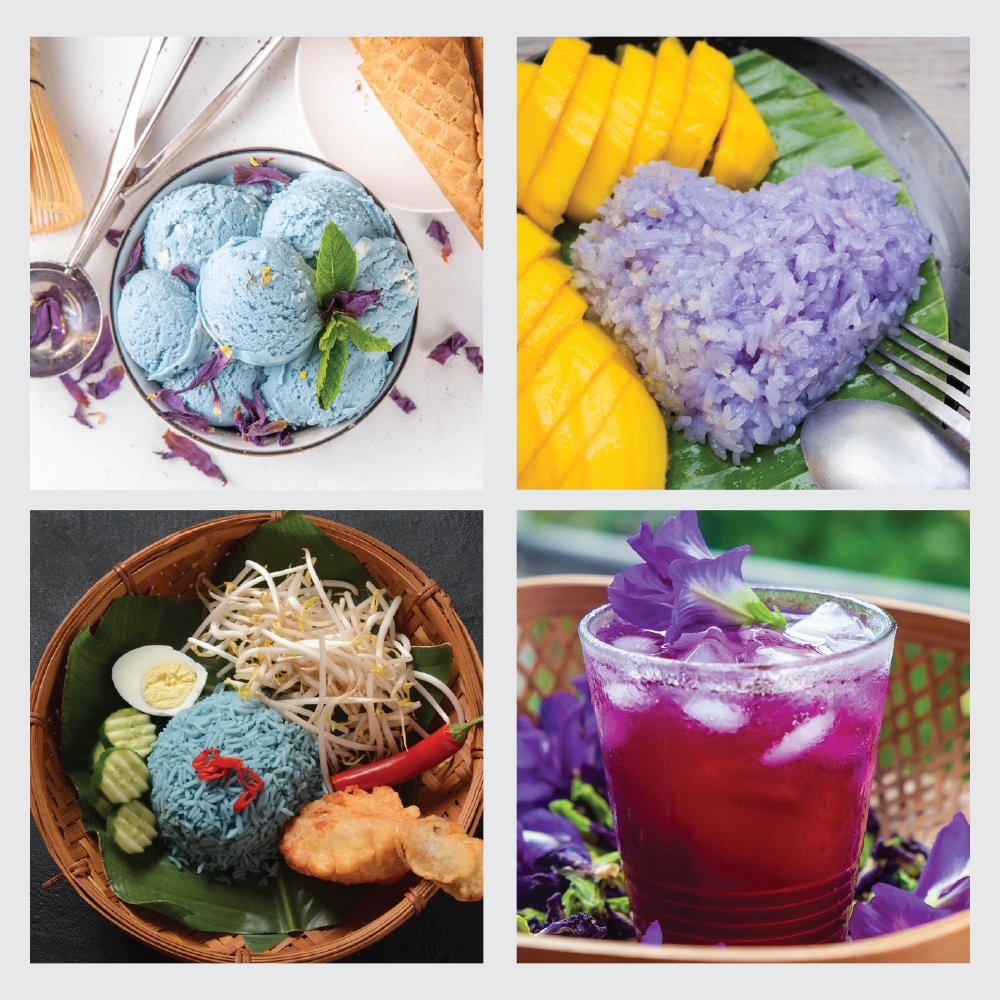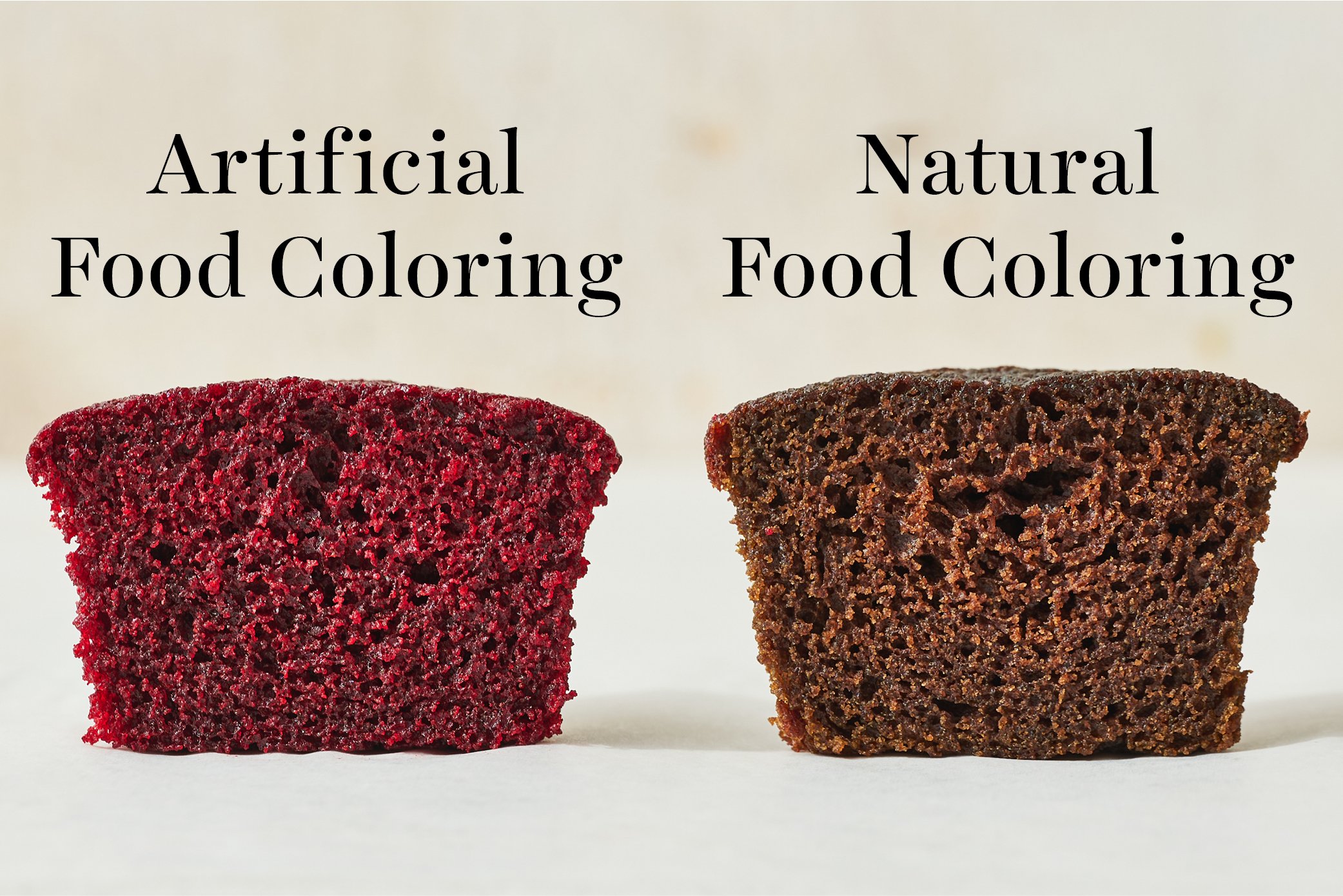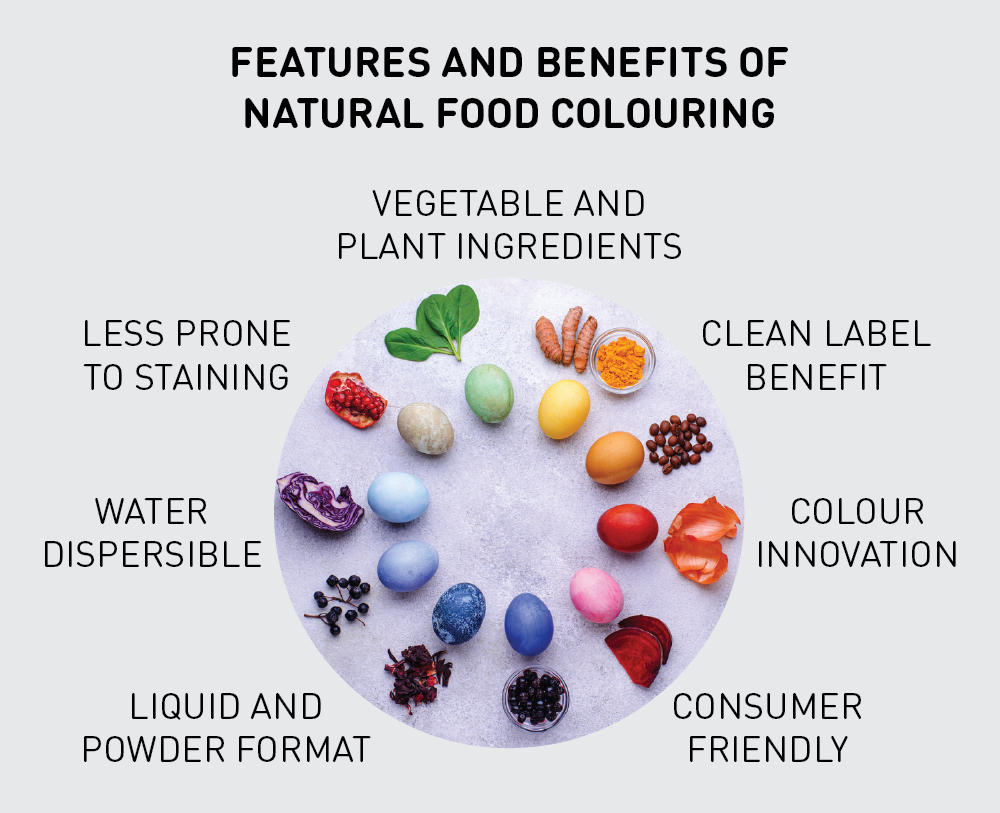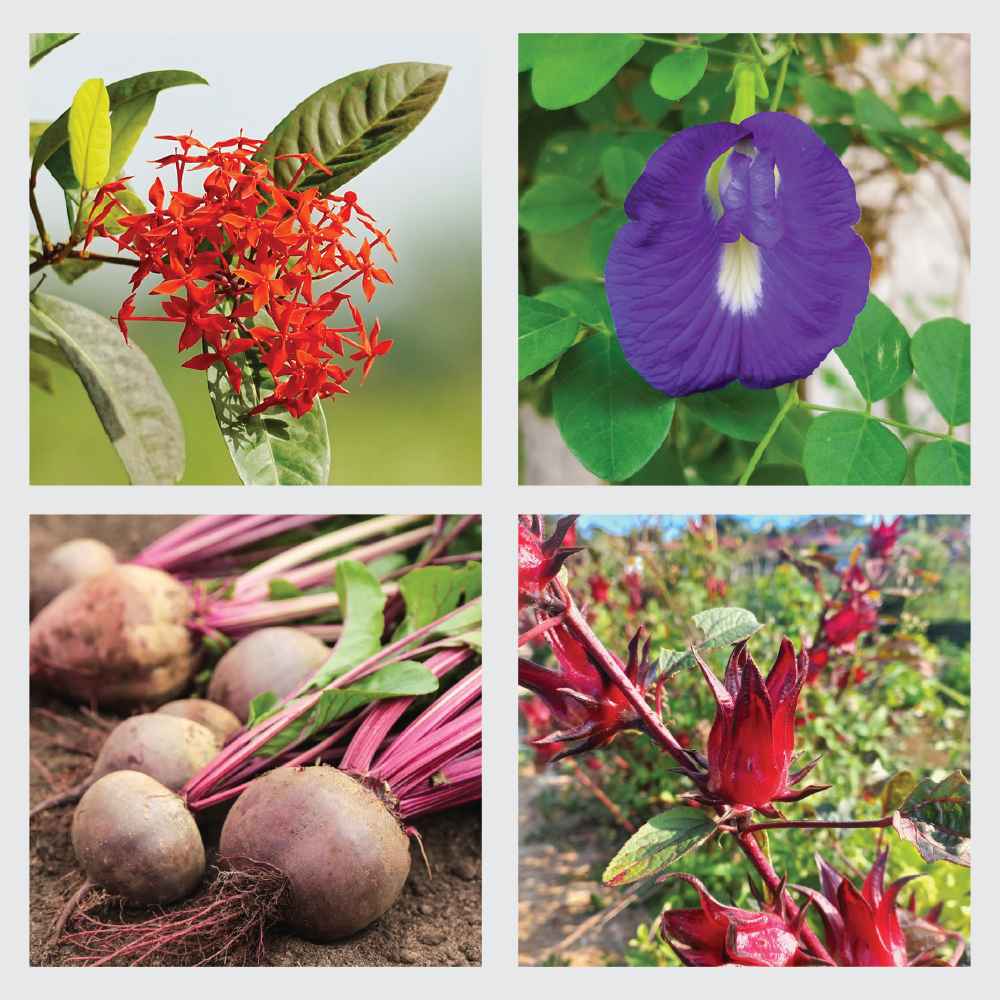Introduction
People have recently shown a strong interest in natural and sustainable products, especially in the food and beverage industry. One trend gaining attention is using natural food colourings made from fruits, flowers, and plants.
A great example is the bright red Ixora coccinea, known in Malaysia as Jenjarum. Traditionally used in herbal medicine and cultural practices, this flower is now being studied as a natural food colouring. Natural colourings, like those from the Jenjarum flower, offer a healthier, eco-friendly choice. In Malaysia, other popular natural food colouring sources include bunga telang (butterfly pea flower) for its vibrant blue hue, turmeric for its golden yellow, pandan leaves for green, and roselle (Hibiscus sabdariffa) for its deep red tones. These options reflect the country’s rich biodiversity and culinary traditions.
Rainbow on Your Plate: Natural vs. Artificial Food Colouring Showdown
Early colourings came from natural sources like plants and minerals. However, with industrialisation, artificial dyes became popular because they were cheaper, brighter, and more stable during processing. Today, synthetic colours such as tartrazine and allura red are commonly used in candies, drinks, and processed foods. Despite their advantages, these dyes have been linked to health problems, including allergies and behavioural issues in children. Some countries have even banned certain artificial dyes.
On the other hand, natural food colourings are derived from fruits, vegetables, flowers, and spices. They are considered safer and often have added health benefits. For example, in Malaysia, bunga telang provides a natural blue pigment for drinks and desserts. At the same time, turmeric and pandan leaves are used in traditional dishes for their vibrant yellow and green hues. Red pigments can be sourced from Jenjarum, roselle, and red beet. While natural dyes are healthier, they face challenges like fading under heat or light and higher production costs. Innovative ideas like exploring more stable colouring sources, e.g. Jenjarum, aim to overcome these limitations.

Challenges of Commercialising Natural Food Colouring
Natural and artificial food colourings each have their challenges. Artificial dyes are cost-effective and perform well under various conditions, such as heat, light, and pH changes. However, they are linked to health risks like allergies and long-term toxicity. In contrast, natural colourings are safer but more expensive and less stable. Another concern is the environmental impact. Artificial dyes are petroleum-based and contribute to pollution. Natural colourings are eco-friendly but rely heavily on agriculture, which can increase costs and reduce availability. Additionally, regulatory differences complicate the situation. Artificial dyes face strict controls in some countries, while natural dyes require rigorous testing to ensure safety and consistency.

Advantages of Natural Food Colouring
Natural food colourings offer several benefits, making them a better alternative to synthetic dyes. They are safer as they are derived from plants, seeds, flowers, and minerals without harmful chemicals. Natural dyes are also less likely to cause allergic reactions, making them suitable for people with dietary restrictions. Furthermore, they are environmentally friendly because they come from renewable sources and do not harm ecosystems. In Malaysia, these natural pigments enhance the authenticity of traditional dishes while meeting the demand for clean-label products.

Innovations in Natural Food Coloring

Innovations in natural food coloring are transforming the food industry. Advances in biotechnology, such as fermentation and enzymatic processes, are helping produce stable pigments like anthocyanins and carotenoids. In Malaysia, researchers are exploring underutilised sources like Jenjarum, roselle, and even microalgae for new color options. Techniques like encapsulation and nanotechnology are improving the stability of natural colors, making them more resistant to heat, light, and pH changes. These innovations help natural dyes compete with synthetic ones while meeting consumer demands for health-conscious and sustainable products.
Future Prospects of Natural Food Colorings
The future of food coloring is moving toward natural and sustainable solutions. Biotechnology is leading the way, using processes like microbial fermentation to produce pigments. For example, algae are emerging as a promising source, offering colors like blue from phycocyanin and orange from beta-carotene. In Malaysia, the use of local ingredients like bunga telang, Jenjarum, and pandan leaves aligns with global trends for clean labels and health- focused products. The future of food coloring also includes functional benefits, with pigments like turmeric providing both vibrant colors and health-enhancing properties. Sustainability is key. Manufacturers are focusing on responsible sourcing, reducing waste, and conserving energy during production. As natural dyes become more accessible and stable, they will play a central role in shaping the future of the global food industry.
Prepared by:
Nurul Ain Izzati binti Muhammad, Muhammad Nurfudhail bin Mohd Fudjari, Siti Nur Shafiqah binti Shamsul Khairal, Iqbal Hakim bin Md Zulkiflee, Muhammad Zulhafiz Aiman bin Mohd Zanuri, Muhammad Nur Syariffuddin bin Mohd Tarmeddy, Tan Chin Hock, Lee Poh Hoong





